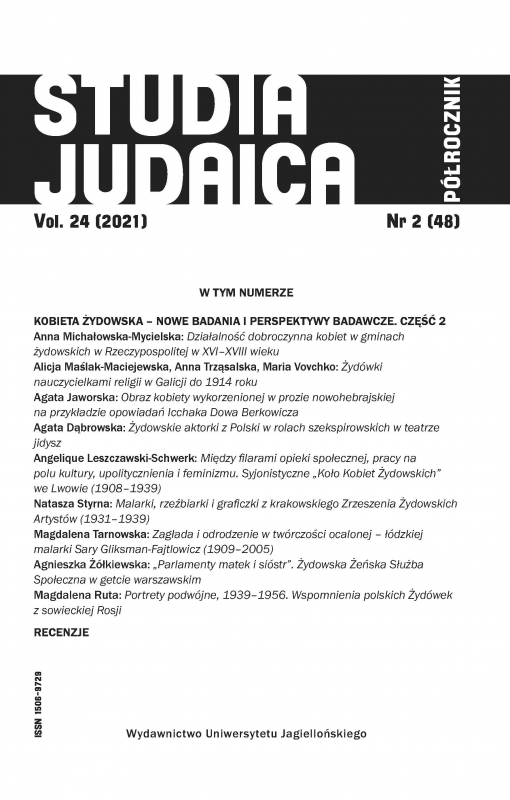Zagłada i odrodzenie w twórczości ocalonej – łódzkiej malarki Sary Gliksman-Fajtlowicz (1909–2005)
The Holocaust and Rebirth in the Works of Sara Gliksman-Fajtlowicz, a Painter From Łódź, 1909–2005
Author(s): Magdalena TarnowskaSubject(s): Jewish studies, History of Art
Published by: Wydawnictwo Uniwersytetu Jagiellońskiego
Keywords: Sara Gliksman-Fajtlowicz; sztuka Holokaustu; polsko-żydowska sztuka w Polsce; sztuka lat 1945–1960 w Polsce; odrodzenie w sztuce żydowskiej; Holocaust art; Polish-Jewish art in Poland; postwar art of
Summary/Abstract: Sara Gliksman-Fajtlowicz, a painter, came from a well-off family of Majerowiczs, the owners of opticians’ shops in Łódź. She studied at private painting and drawing schools in Łódźand Warsaw. Before the outbreak of World War II, she was active in the Polish art milieu. In 1933, she became a member of the Trade Union of Polish Artists (Związek Zawodowy Polskich Artystów Plastyków, ZZPAP) and participated in its exhibitions in Łódź, Warsaw, Kraków,and Lviv. She painted mainly landscapes, still lifes, and—less frequently—portraits. She published her works in the union magazine Forma. In 1940, she was displaced to the Łódźghetto where she worked as a graphic artist at the Statistics Department. Thanks to this she could obtain art materials. Her clandestine activity was documenting life in the ghetto in paintings and drawings. She survived the liquidation of the ghetto and then was forced to work on cleaning that area. Liberated on 19 January 1945, she returned to her house where some of her prewar works had survived. After 1945 she continued her artistic career and exhibited with the ZZPAP, as well as with the Jewish Society for the Encouragement of Fine Arts. In 1957, she emigrated to Israel. Gliksman died in Tel Aviv in 2005. The aim of this article is to verify and describe Sara Gliksman’s biography, to present her activities in the Polish-Jewish artistic community of postwar Poland, as well as to place her works in the context of issues concerning survivors’ memory and artistic attitudes toward the Holocaust, and art as a manifestation of hope for the rebirth of Jewish life and culture in postwar Poland in the second half of the 1940s and the beginning of the 1950s.
Journal: Studia Judaica
- Issue Year: 24/2021
- Issue No: 48
- Page Range: 437-471
- Page Count: 35
- Language: Polish

